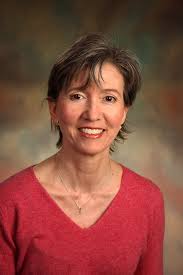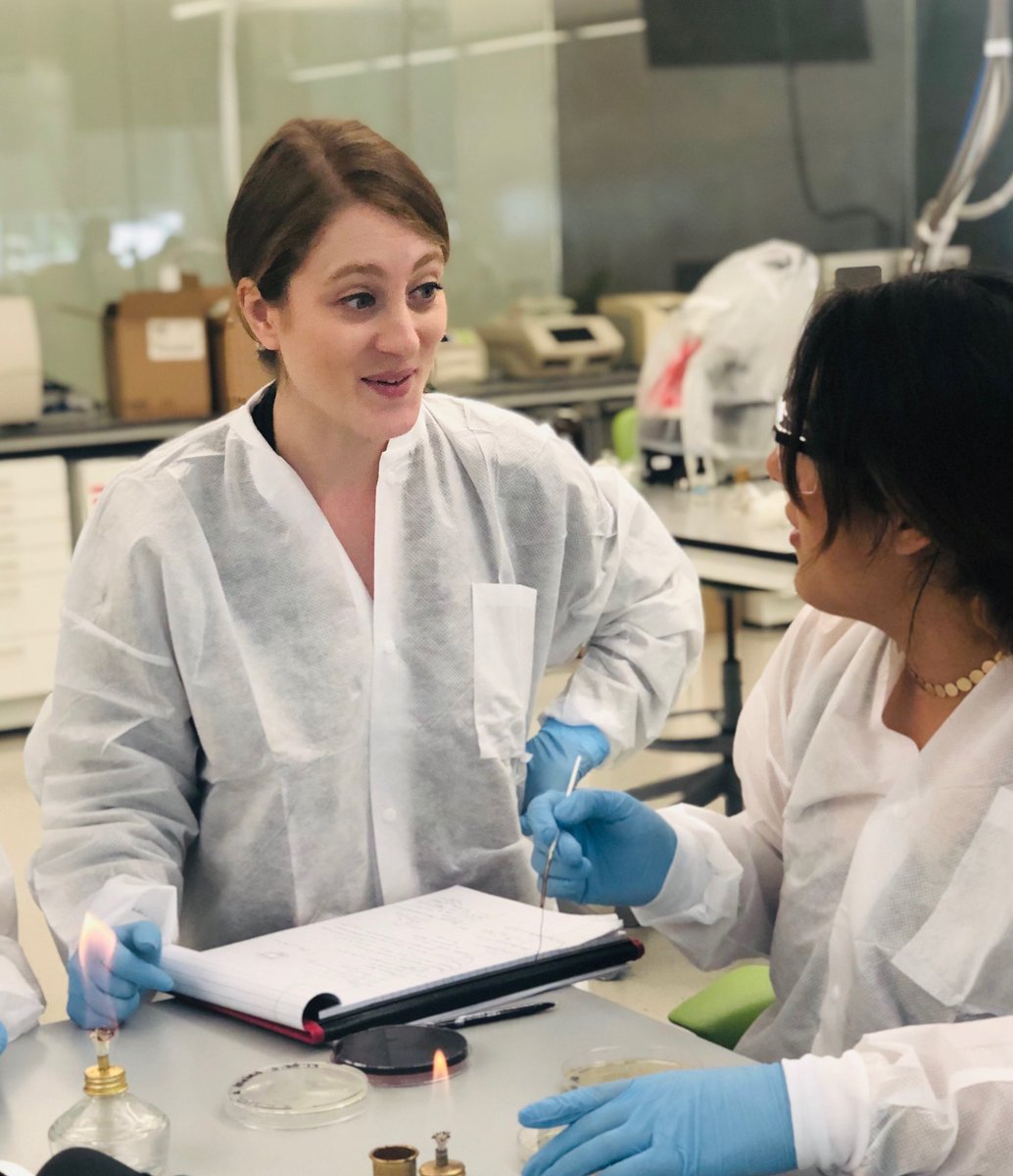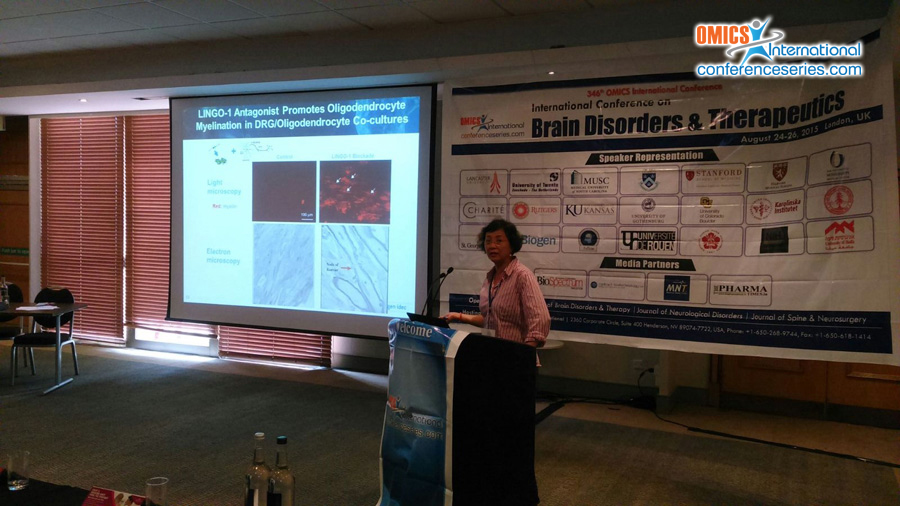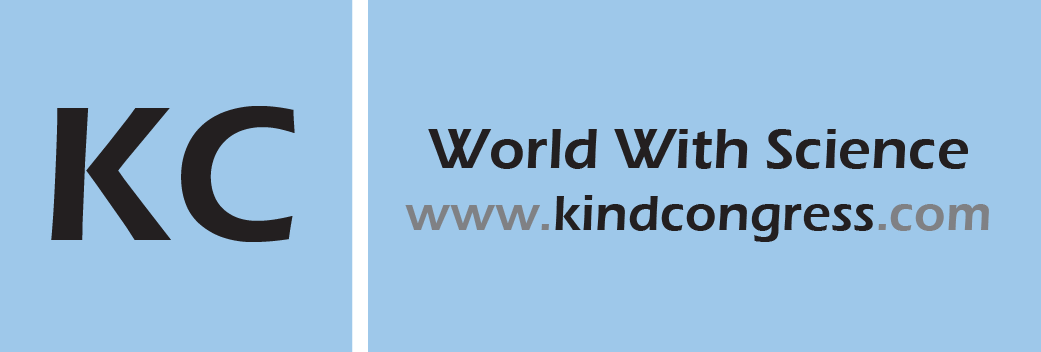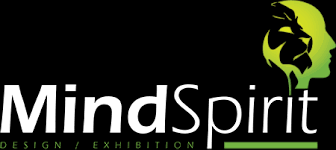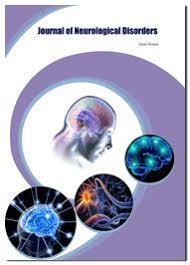Theme: Scientific Insights of Brain Disorders, Brain Research & Neuroscience Research Innovations
Brain Injury 2020
- About Conference
- Why to Join Brain Injury 2020
- Target Audience for Brain Injury 2020
- Core Audience
- Meeting Objective
- Scientific Session
- Market Analysis
Brain Injury 2020
Details of Brain Injury 2020 Conference in Denmark :
| Conference Name | Place | Date |
| Brain Injury 2020 | Copenhagen, Denmark | August 17-18,2020 |
The World Congress on Advances in Brain injury & Neuroscience Disorders and Therapeutics would be a stage for interconnecting National and Global specialists, scientists and chiefs both from the scholarly world and industry from everywhere throughout the world to trade their insight, skill and research developments in the field of Brain issue, Neurology ,TBI and Mental illness. These Brain Issue and Neurology meeting is a station for trading thought and learning on Cerebrum damage, brain tumor, brain Issue, Neurology, Neuroscience, Neuroimaging, and Neurological issue. This conference includes the investigation identified with the conclusion and treatment of infection or failing of the cerebrum, muscles, fringe nerves, spinal cord,skull and autonomic sensory system. The target of the gathering is to keep up and create science and related research at a universal level. To accomplish this, it is vital to carry into a significant field of neurology with the novel investigations, which can spare a huge number of lives we Navigating the Future Advancements in Brain injury & Neuroscience.
So be a part of the team which shares the same vision and provides a prism of possibilities for the future. Join us at in Copenhagen, Denmark Brain Injury 2020.
Brain Injury 2020 conference gives a platform to globalize the research by connecting a dialogue between Neuroscience and Medical organizations and knowledge transfer from research to Neurology,Clinical & Medical. 10th International Conference on Brain Injury & Neuroscience aims in proclaiming the knowledge and share new ideas amongst the professionals, Neuroscience specialists and students from research areas of Brain Injury, Neuroscience and all the related disciplines to share their research experiences and indulge in interactive discussions and special sessions at the Brain Injury 2020 Conferences.
Conference Highlights:-
- Neurophysics
- Neurology& Clinical
- Paleoneurobiology
- Brain Injury
- Traumatic Brain Injury
- Molecular and cellular neuroscience
- Neurobiology
- Brain Disorders and Pathophysiology
- Neurosurgery and Central Nervous System
- Mental illness
- Alzheimer’s Disease & Dementia
- Brain Stem Stroke
- Mental Health Therapies
- Brain Complication
- Brain Injury Biomarkers
- Other
Brain Injury 2020 brings together Brain injury & Neuroscienc eexperts from both the industry & academia to interact and exchange ideas about the state of the technologies related to Information Technology, Healthcare, both healthcare and Brain information technology & Internet-related things, m-Health, Telemedicine, Digital Health, Health Informatics,Clinical Data Management Brain Injury etc.The conference will also provide an insightful understanding of the issues arising out of the Neuroscienc and the future concern and remedies from that. Brain Injury 2020 provide an opportunity to interact with eminent scientists, doctors, engineers, researchers, business leaders, experts from all over the world. The efforts put by the Brain Injury 2020 conference 2020 will help in taking a giant step in the field of Brain Injury 2020 to solve the drawbacks of the current Brain Injury & Neuroscienc Systems.
- Fostering collaboration and networking to support members’ work to improve people’s lives.
- Expanding members’ leadership opportunities within the association and in the field.
- World-class platform to Exhibit your products, services, innovations & Ideas
- Special Workshop/ Symposium, B2B, and interactive sessions, with industry Sponsors and Exhibitors.
- One to one interaction with eminent scientists, Industry Leaders, Researchers
- Well organizing the program with 5+ hours of networking sessions
- Interactive panel discussions and Q&A sessions
- Lively Exhibition area filled with the leading industry solution providers
- Medical Professionals related to Surgery.
Scientists and researchers related to the broad areas of Brain Injury & Neuroscience applications, Internet of Things (IoT), m-Health, Telemedicine, Digital Brain Injury etc. are most likely to attend BRAIN INJURY conference and utilize the scope of extending their skills, work on basic and significant applications and people doing their masters and research work in various related streams are also likely to attend this conference.
The conference will be useful to participants from both the Industry and Academia working in all the domains of Brain Injury & Neuroscience and professional’s from interrelated fields.
Brain Injury Conference is intended for the Neurology& Clinical executives working in Neuroscience systems, group practices, and hospitals, integrated networks in the Neuroscience sector and health plans but not limited to.
- Chief Marketing and technology officers of BRAIN INJURY & NEUROSCIENCE
- Product & Service providers
- Chief Information Officers
- Chief of Medical Records
- Marketing & Communications Directors
- CRM Managers and Data Analysts
- NEUROSCIENCE security professionals
- Information Systems Directors/Managers
- Medical/Clinical Informatics Directors/Managers
- Web Directors, Webmasters and Web Team Members
- Public Relations Directors
- Business Development Executives
- Physician Relations Directors
- Strategic Planners
Main objective of this global congress is to promote learning and provide an opportunity to reach the largest assemblage of participants from Brain Injury & Neuroscience field, research and development community that is from academia, research entities, industrial groups, related associations, societies, biomedical and medical device manufacturers, bioengineers. Neuroscience specialists,
Track 01: Brain Injury
A Brain injury is any sort of injury to your brain, skull, or scalp. This can range from a mild bump or bruise to a traumatic brain injury. Common head injuries include concussions, skull fractures, and scalp wounds. The consequences and treatments vary greatly, depending on what caused your head injury and how severe it is. Brain injuries may be either closed or open. A closed head injury is an injury that doesn’t break your skull. An open (penetrating) head injury is one in which something breaks your scalp and skull and enters your brain. It can be hard to assess how serious a head injury is just by looking. Some minor head injuries bleed a lot, while some major injuries don’t bleed at all
Track 02: Traumatic Brain Injury
Traumatic brain injury is a degenerative or congenital nature, but caused by external physical force that may produce a diminished or altered state of consciousness, which results in an impairment of cognitive abilities or physical functioning.The disturbances of cognitive, emotional, and behaviour functioning after TBI may produce permanent impairments.There are 3 different types of traumatic brain injury are folowing Mild traumatic brain injury is a trauma to the head that results in a confused state or a loss of consciousness of less than 30 minutes. Moderate traumatic brain injury is a trauma to the head that results in a loss of consciousness of 30 minutes to 24 hours. Severe traumatic brain injury is a trauma to the head that results in a loss of consciousness of greater than 24 hours
- Pathophysiology and Recovery
- TBI Diagnosis and Management
- TBI and Psychiatric Illness
- TBI on Neurocognitive Functioning
- Challenges of Litigating Traumatic Brain Injury
Track 03: Mental Health Therapies
The central nervous system is the part of the nervous system consisting of the brain and spinal cord. The central nervous system is so named because it integrates information it receives from, and coordinates and influences the activity of, all parts of the bodies of bilaterally symmetric animals that is. Many consider the retina and the optic nerve as well as the olfactory nerves and olfactory epithelium as parts of the CNS, synapsing directly on brain tissue without intermediate ganglia. The CNS is contained within the dorsal body cavity, with the brain housed in the cranial cavity and the spinal cord in the spinal canal. In vertebrates, the brain is protected by the skull, while the spinal cord is protected by the vertebrae. The brain and spinal cord are both enclosed in the meninges in central nervous systems, the intraneuronal space is filled with a large amount of supporting non-nervous cells called neuroglial cells. A Neurosurgery is a physician who specializes in the diagnosis and surgical treatment of disorders of the central and peripheral nervous system including congenital anomalies, trauma, tumors, vascular disorders, infections of the brain or spine, stroke, or degenerative diseases of the spine
- Psychotherapy
- Medication
- Hospitalization
- Support Group
- Complementary & Alternative Medicine
- Health Practices
- Self Help Plan and Art Therapy
- Peer Support
- Electroconvulsive Therapy
- Case Management
Track 04: Brain Injury Biomarkers
Brain Injury is usually reliably visible as structural abnormalities using techniques such as computed tomography (CT) or conventional magnetic resonance imaging (MRI), more subtle disturbances characteristic of mild TBI are not so easily demonstrated by these imaging modalities. Mild TBI results from the main etiologist of neural contusion and axonal injury, which subsequently results in biochemical, metabolic, and cellular changes that may be responsible for some of the long-term problems seen in patients who develop Postconcussion syndrome (PCS). Since several if not all imaging modalities employed in TBI diagnosis are dependent on structural of functional rearrangement of cellular or extracellular components or assessment of blood-brain barrier (BBB) disruption, it is not surprising that surrogate peripheral or central nervous system (CNS) correlates of CT or MRI have been described.
- New Methods in Diagnosis
- Different Diagnosis Procedures
- Early Detection Possibilities
- Patient’s Psychological Changes
- Novel Approaches in Biomarkers
- Normal Brain Aging
Track 06: Brain Stem Stroke
A stroke occurs when blood supply to the brain is interrupted. The way a stroke affects the brain depends on which part of the brain suffers damage. Brain stem strokes can have complex symptoms, and they can be difficult to diagnose. Brain stem strokes can have complex symptoms, and they can be difficult to diagnose. If a stroke in the brain stem results from a clot, the faster blood flow can be restored in this critical area, the better the chances for recovery. The risk factors for brain stem stroke are the same as for stroke in other areas of the brain: high blood pressure, diabetes, heart disease, atrial fibrillation, and smoking. Like strokes in other areas of the brain, brain stem strokes can be caused by a clot or a hemorrhage. There are also rare causes, as an injury to an artery due to sudden head or neck movements
- Central Nervous System Disorders
- Cerebrovascular Disorders and Stroke
- Neurological Disorders and Chronic Pain
- Stroke and its Management
- Neuro Oncology
- Stroke Rehabilitation and Recovery
- Therapeutic Approaches for Neurological Disorders and Stroke
Track 07: Alzheimer's Disease& Demantia
Alzheimer’s is one of the most common causes of dementia among older adults. Dementia is the loss of cognitive functioning, thinking, remembering, and reasoning and behavioral abilities to such an extent that it interferes with a person daily life and activities. Alzheimer's disease is currently ranked as the sixth leading cause of death in the United States. The causes of dementia can vary, depending on the types of brain changes that may be taking place. Other dementias include Lewy body dementia, front otemporal disorders, and vascular dementia. It is common for people to have mixed dementia a combination of two or more disorders, at least one of which is dementia. Alzheimer's disease is a chronic neurodegenerative disease that usually starts slowly and worsens over time which is caused by 60–70% of cases of dementia.
- Vascular Dementia
- Stroke Related Dementia
- Fronto-temporal Dementia
- Rarer causes of Dementia
- Dementia with Lewy Bodies
Track 08: Mental Illness
Mental health includes emotional, psychological, and social well-being. It affects how we think, feel, and act. It also helps determine how we handle stress, relate to others, and make choices. Mental health is important at every stage of life, from childhood and adolescence through adulthood. Over the course of your life, if you experience mental health problems, your thinking, mood, and behavior could be affected. Many factors contribute to mental health problems, including Biological factors, such as genes or brain chemistry, Life experiences, such as trauma or abuse, Family history of mental health problems. Mental health refers to our cognitive, behavioral, and emotional wellbeing - it is all about how we think, feel, and behave. The term 'mental health' is sometimes used to mean an absence of a mental disorder
- Classes of Mental illness/Types of Disorder
- Schizophrenia and Anxiety
- Prevention of Mental illness
- Complications of Mental illness
- Diagnosis & Treatment for Mental Disorder
- Depression & Anxiety
- Post-Traumatic Stress Disorder
Track 09: Neurosurgery and Cental Nervous Ststem
The central nervous system is the part of the nervous system consisting of the brain and spinal cord. The central nervous system is so named because it integrates information it receives from, and coordinates and influences the activity of, all parts of the bodies of bilaterally symmetric animals that is. Many consider the retina and the optic nerve as well as the olfactory nerves and olfactory epithelium as parts of the CNS, synapsing directly on brain tissue without intermediate ganglia. The CNS is contained within the dorsal body cavity, with the brain housed in the cranial cavity and the spinal cord in the spinal canal. In vertebrates, the brain is protected by the skull, while the spinal cord is protected by the vertebrae. The brain and spinal cord are both enclosed in the meninges in central nervous systems, the intraneuronal space is filled with a large amount of supporting non-nervous cells called neuroglial cells.
- Spinal Neurosurgery
- Traumatic Neurosurgery
- Mental Processes Affects Behavior
- Advanced Operative Techniques in Neurosurgery
Track 10: Brain Disorder and Pathophysiology
A neurological issue is any disorder of the sensory system. Auxiliary, biochemical or electrical variations from the norm in the mind, spinal line or different nerves can bring about the scope of manifestations. Cases of side effects incorporate loss of motion, muscle shortcoming, poor coordination, loss of sensation, seizures, perplexity, torment and modified levels of awareness. There are numerous perceived neurological issue, some moderately normal, however numerous uncommon. They might be evaluated by neurological examination and contemplated and treated inside the specialties of neurology and clinical neuropsychology
- Brain Tumour and Neurology of Brain
- Brain Diseases and Infections
- Neurodegeneration and Aging Disorders
- Cerebrospinal Complications
- Neuroimmunology of Brain
Track 11: Neurobiology
The scientific study of the nervous system increased significantly during the second half of the twentieth century, principally due to advances in molecular biology, electrophysiology, and computational neuroscience. This has allowed neuroscientists to study the nervous system in all its aspects: how it is structured, how it works, how it develops, how it malfunctions, and how it can be changed
Track 12: Molecular and Cellular Neuroscience
In molecular neuroscience include the mechanisms by which neurons express and respond to molecular signals and how axons form complex connectivity patterns. At this level, tools from molecular biology and genetics are used to understand how neurons develop and how genetic changes affect biological functions. The morphology, molecular identity, and physiological characteristics of neurons and how they relate to different types of behavior are also of considerable interest.
- cellular neuroscience
- neurotransmitters
- trophic interactions
- Computational neurogenetic modeling
Track 13: Amyotrophic Lateral Sclerosis
Amyotrophic horizontal sclerosis (ALS) is a gathering of uncommon neurological ailments that predominantly include the nerve cells (neurons) liable for controlling willful muscle development. Intentional muscles produce developments like biting, strolling, and talking. The ailment is dynamic, which means the indications deteriorate after some time. Right now, there is no solution for ALS and no compelling treatment to end ,or turn around, the movement of the infection.
What research is being done:
- Cellular defects
- Stem Cells
- Familial versus sporadic ALS
- Biomarkers
- New treatment options
Track 14: Intracranial Hemorrhage Mortality
A hemorrhagic stroke is dying (drain) that all of a sudden meddles with the mind's capacity. This draining can happen either inside the cerebrum or between the mind and the skull. Hemorrhagic strokes represent about 20% everything being equal, and are partitioned into classes relying upon the site and reason for the dying.
- Intracerebral haemorrhage
- Subarachnoid hemorrhage
Track 15: Neurobehavioral Symptoms
Neurologic issues in clinical medication spread a wide assortment of clutters. The sensory system is anatomically and practically partitioned into focal and fringe subsystems. The focal sensory system (CNS) incorporates the cerebrum and spinal line, and CNS brokenness can be subdivided into two general classes, neurobehavioral and engine/tangible.
Case ID in nervous system science is additionally frequently troublesome. Regardless of the advances in neuroimaging, numerous kinds of neurologic rotations are biochemical and show no variations from the norm on filtering tests.
Track 16: Anoxic Brain Injury
Anoxic cerebrum damage is a kind of mind damage that isn't typically brought about by a hit to the head. Rather, anoxic mind damage happens when the cerebrum is denied of oxygen. Left without oxygen for a really long time, neural cells start to kick the bucket through a procedure called apoptosis. What's more, however cell passing is an ordinary piece of the human experience, when countless synapses at the same time bite the dust, patients can be left with decreased mind work. In the event that the oxygen hardship proceeds, anoxic cerebrum wounds may even wind up lethal.
Track 17: Psychopharmacology
Psychopharmacology is outlined as a logical report that manages the impact of medications have on the state of mind,observation, recognizing, and exercises. Psychopharmacology is separated from Neuropsychopharmacology that features the connection between sedate made changes inside the working. Psychoactive medications relate for the most part with explicit receptors or target locales found in the sensory system to convince unavoidable differences in cells inside the sensory system and adjusts the awareness and conduct changes in mental or physiological capacities.
Track 18: Suicide prevention
- Nursing and emotional well-being
- Nursing instruction in psychological well-being
- Mental wellbeing nursing practice.
Track 20: Child and Adolescent Counselling Psychology
Child and Adolescent coordinating is a technique of security for the energetic one to communicate and research himself and hereafter make sense of how to continue with phenomenal life. The educator basically focusses on the energetic individual and their family or regulators to empower them to change and prosper the troubles they face without any other individual's information, adjust new aptitudes to modify and right now better as an individual.
Track 21: Nanotechnology & Energy
Research into hydride materials for vitality applications commonly concentrates on upgrading gravimetric capacity thickness and particle transport of the materials. Then again, the necessities for stationary applications, for example, power devices can be essentially diverse and manageable to a more extensive class of potential materials. Various geophysical and social weights are driving a movement from fossil fills to renewable and practical vitality sources. To impact this change, we should make the materials that will bolster new vitality advances. Sun oriented vitality is the most extreme need to create photovoltaic cells that are productive and financially savvy.
Market analysis
The global neuroscience market size was valued at USD 28.42 billion in 2017 and is anticipated to grow at a CAGR of three.1% over the forecast amount. High influencing factors like in progress brain mapping analysis and investigation comes, neuroscience-based initiatives by government bodies, and technological advances in tools and algorithms that area unit enforced in neuroscience space, are expected to propel the market growth.
These factors area unit anticipated to bolster revenue generation by urging the merchandise adoption during this market throughout the forecast year.
Presence of organizations & institutes, such as NIH, Neuroscience Canada, University of Utah, Max Planck Florida Institute, Ontario Brain Institute, and the University of Pennsylvania; in the space are expected to majorly impact the development of neuroscience arena. These entities play a important role in fast neuroscience-based analysis and development to enhance patient outcomes in those full of neurologic disorders.
Several initiatives area unit undertaken by the tending communities to require brain-related studies and innovations a step more.
For instance, in 2014, University of Utah launched the “Neuroscience Initiative” in order to help alleviate the devastating effects of brain disorders.
The initiative was created for deepening the understanding of the consequences of brain disorders on health and channelizing the data into innovative solutions for patient care.
Regional Insights
North America captured the biggest share in 2016 as regional market. Key factors that square measure attributed to the present massive share square measure presence of a considerable range of neuroscience-based analysis entities, funding by government organizations, and availableness of well-developed healthcare systems in conjunction with rising prevalence of medical specialty disorders within the region.

This provincial market is also determined by the nearness of numerous associations, colleges, and organizations inside the district that zone unit occupied with undertaking changed activities to quicken R&D in neuroscience space in the U.S., and also in Canada.
With China and Japan on the bleeding edge, Asia Pacific is required to develop as the quickest developing local market inferable from the attributable to always enhancing human services framework and nearness of noteworthy target populace in the area.
Additionally, amplification of cerebrum related examination focused offices that region unit arranged In August 2017, another office called "HUST-Suzhou Institute for Brainsmatics" was opened in Suzhou, China. It is a mind imaging production line that holds 50 robotized machines for cerebrum mapping not at all like different research centers that hold a couple of cerebrum imaging frameworks. Such extensions inside the Asian nations zone unit really anticipated that would cultivate the development of this local market at a spurring pace all through the estimate sum.
Europe: Instrument segment is anticipated to dominate the Europe neuroscience market and contribute the leading shares over the forecast period. The Europe neuroscience market is expected to witness a significant 1.7X growth by 2025 as compared to that of estimated in 2016. Germany is expected to dominate the Europe neuroscience market in terms of revenue over the forecast period due to increasing acceptance of neuroscience studies in the country.
North America: North America neuroscience market is anticipated to register a significant CAGR over the forecast period due to the increasing demand of neuroimaging devices in brain imaging and research activities. Instruments and Hospitals segments as well as U.S. market is expected to dominate the North America market in terms of revenue throughout the forecast period.
Latin America: Latin America neuroscience market is anticipated to register a moderate CAGR of 5.2% over the forecast period. Brazil is expected to maintain its dominance in terms of revenue in the Latin America neuroscience market over the forecast period due to developed medical infrastructure in the country.
MEA: Instrument segment is expected to maintain its dominance in terms of revenue in the MEA neuroscience market over the forecast period due to developing medical infrastructure in region. MEA neuroscience market is anticipated to register a moderate CAGR of 5.1% over the forecast period. In terms of revenue, Rest of MEA market is expected to register sluggish CAGR rate over the forecast period.
APAC: The neuroscience market in China has dominated the APAC neuroscience market over the forecast period due to increasing incidences of CNS disorders among ageing population in the country. The APAC neuroscience market is expected to register a significant CAGR of 7.0% over the forecast period.

Worldwide Neuroscience Market: Forecast
As per our appraisals, the worldwide neuroscience showcase has developed from somewhat more than US$ 250 Mn in 2012 to minimal more than US$ 300 Mn by 2016 end.
We gauge that the worldwide neuroscience advertise is required to develop from more than US$ 300 Mn in 2017 to more than US$ 520 Mn by 2025 end. This speaks to a CAGR of 6.4% over the figure time of 2018– 2025.
The worldwide market for neuroscience speaks to supreme $ chance of US$ 18.5 Mn in 2019 more than 2019and steady chance of US$ 202.7 Mn somewhere in the range of 2018 and 2025.
Conference Highlights
- Brain Injury
- Traumatic Brain Injury
- Mental Health Therapies
- Brain Injury Biomarkers
- Brain Stem Stroke
- Alzheimer’s Disease & Dementia
- Mental illness
- Neurosurgery and Central Nervous System
- Brain Disorders and Pathophysiology
- Neurobiology
- Molecular and cellular neuroscience
- Amyotrophic Lateral Sclerosis (ALS)
- Intracranial Hemorrhage Mortality
- Neuro behavioral Symptoms
- Anoxic Brain Injury
- Psychopharmacology
- Suicide prevention
- Psychiatric and Mental Health Nursing
- Child and Adolescent Counselling Psychology
- Nanotechnology & Energy
To share your views and research, please click here to register for the Conference.
To Collaborate Scientific Professionals around the World
| Conference Date | August 17-18, 2020 | ||
| Sponsors & Exhibitors |
|
||
| Speaker Opportunity Closed | Day 1 | ||
| Poster Opportunity Closed | Click Here to View | ||
Useful Links
Special Issues
All accepted abstracts will be published in respective Our International Journals.
Abstracts will be provided with Digital Object Identifier by







